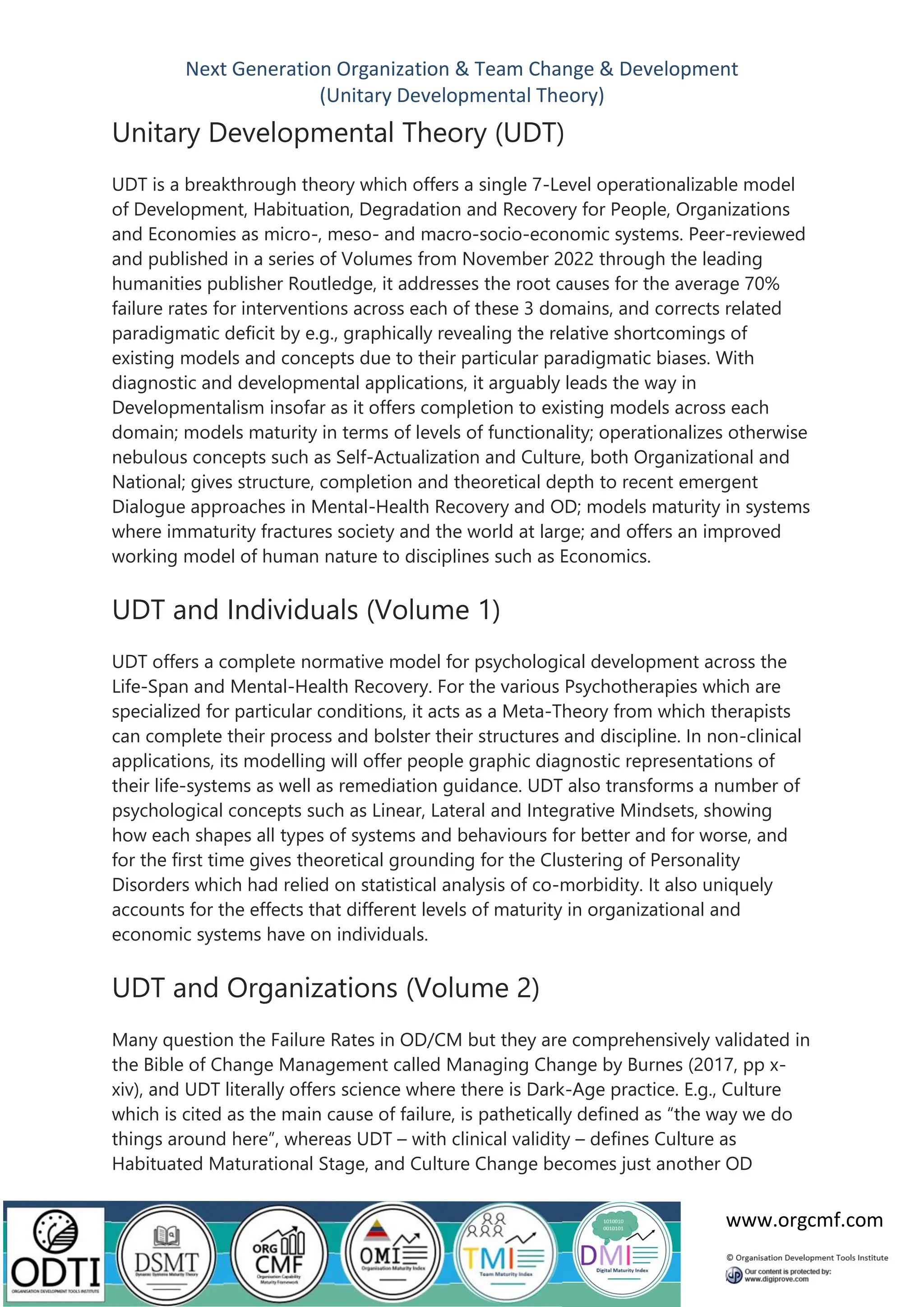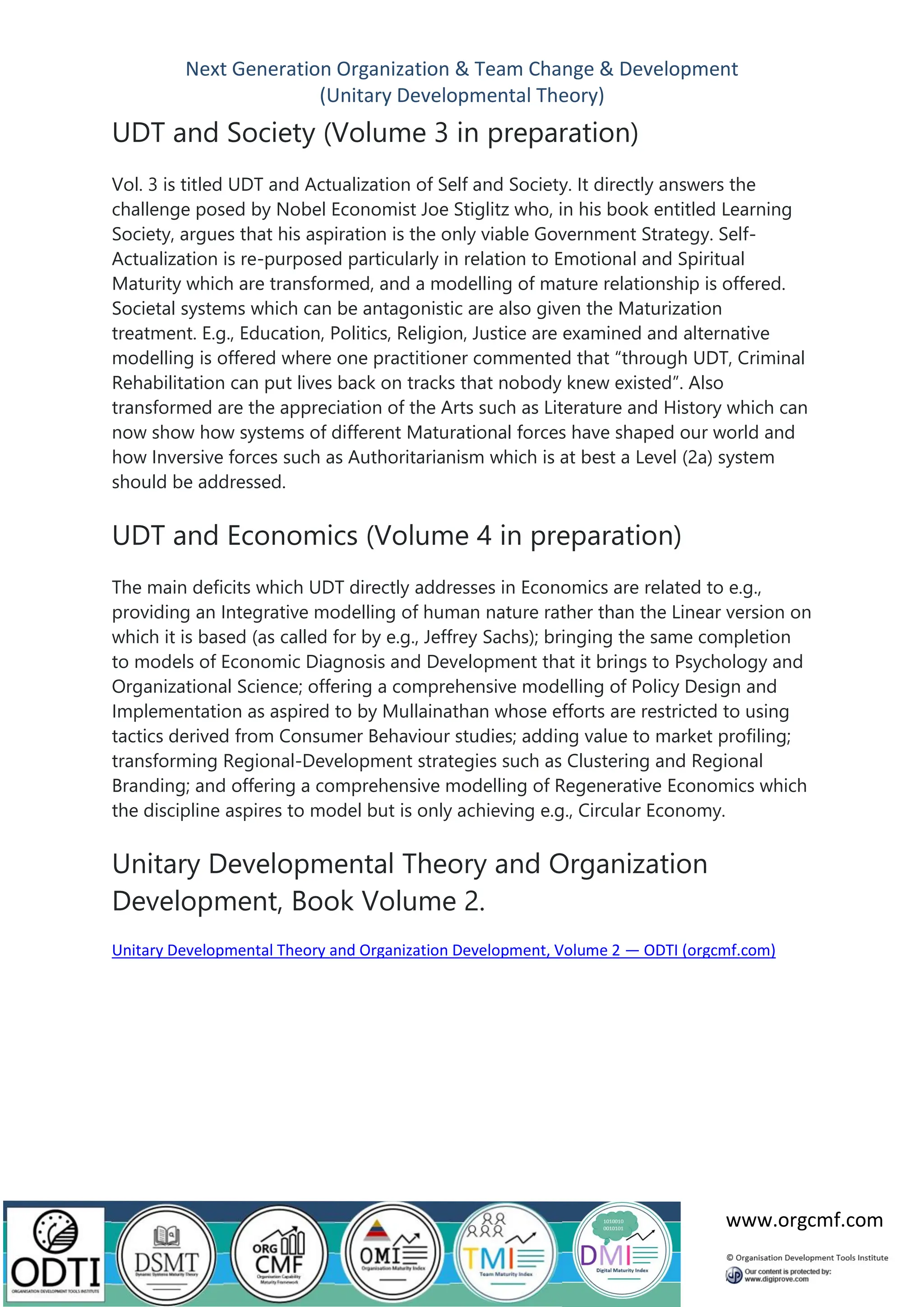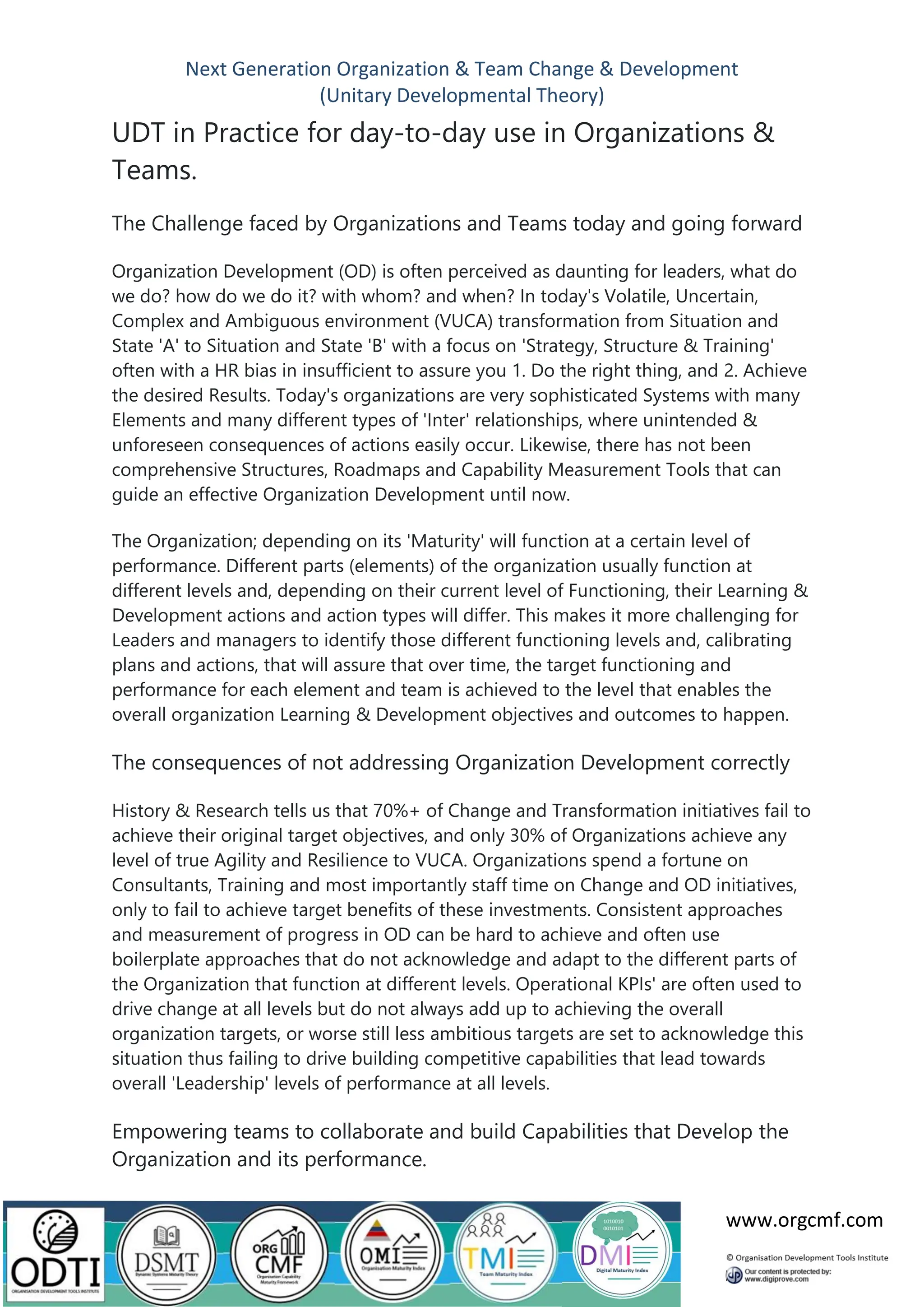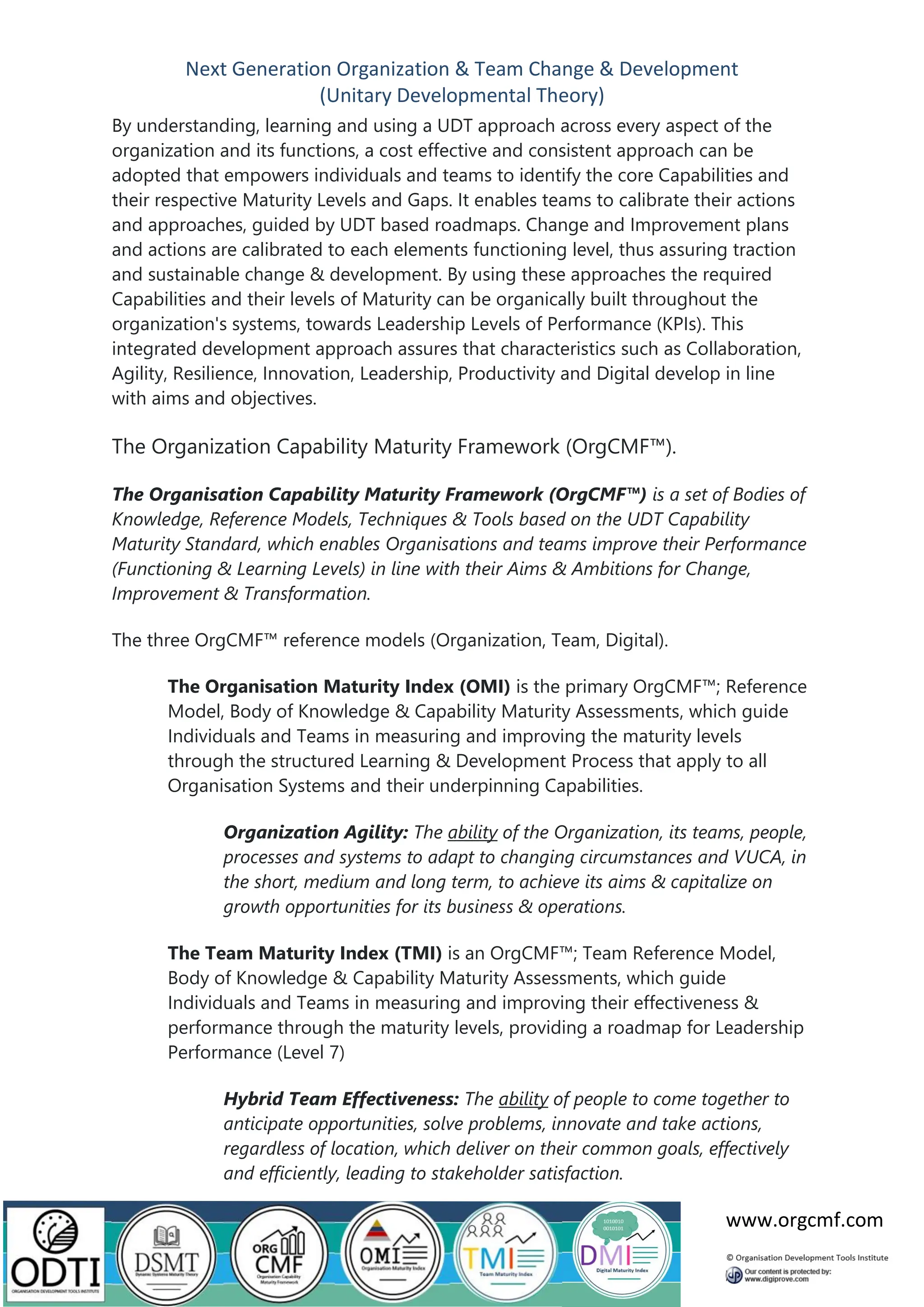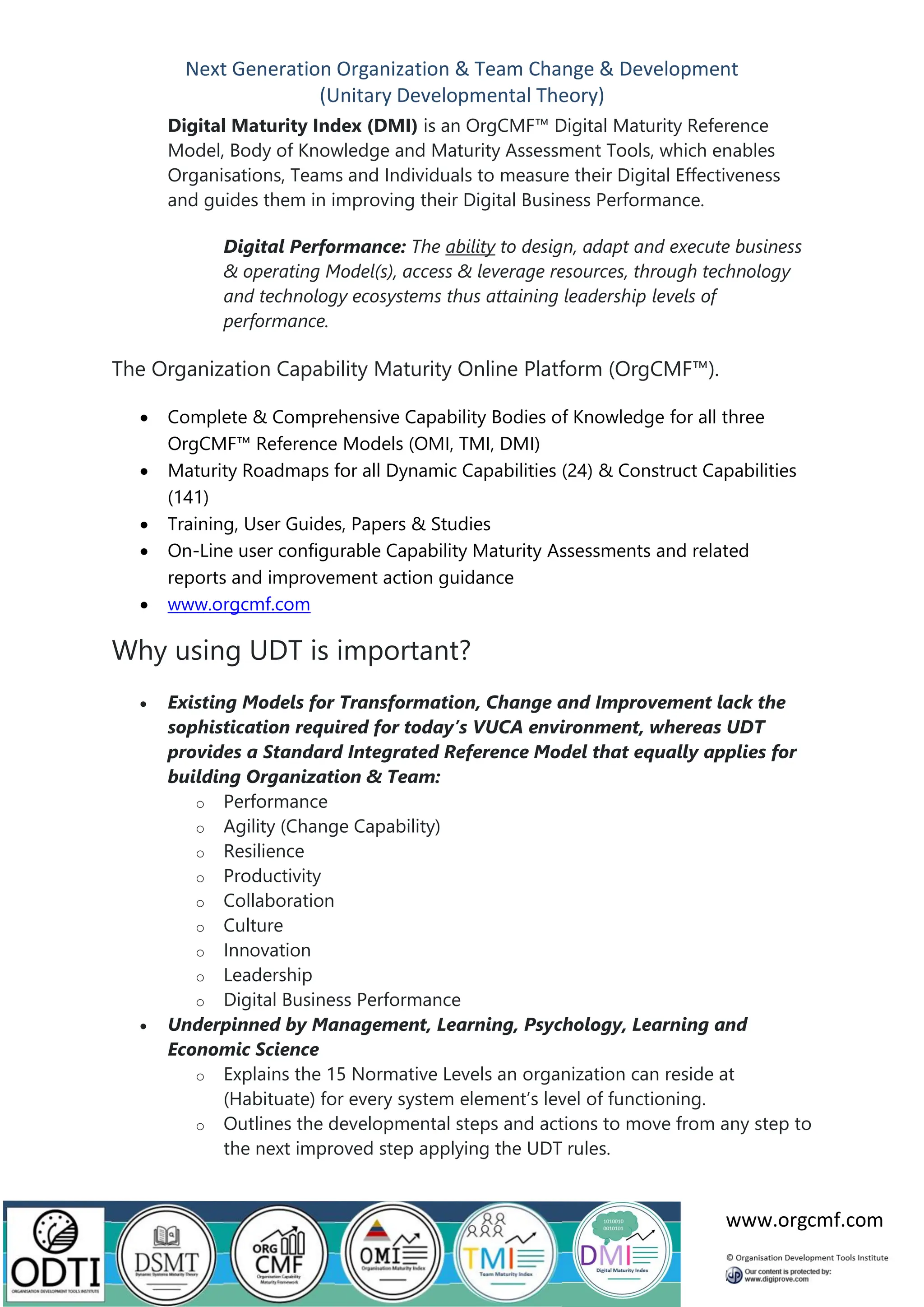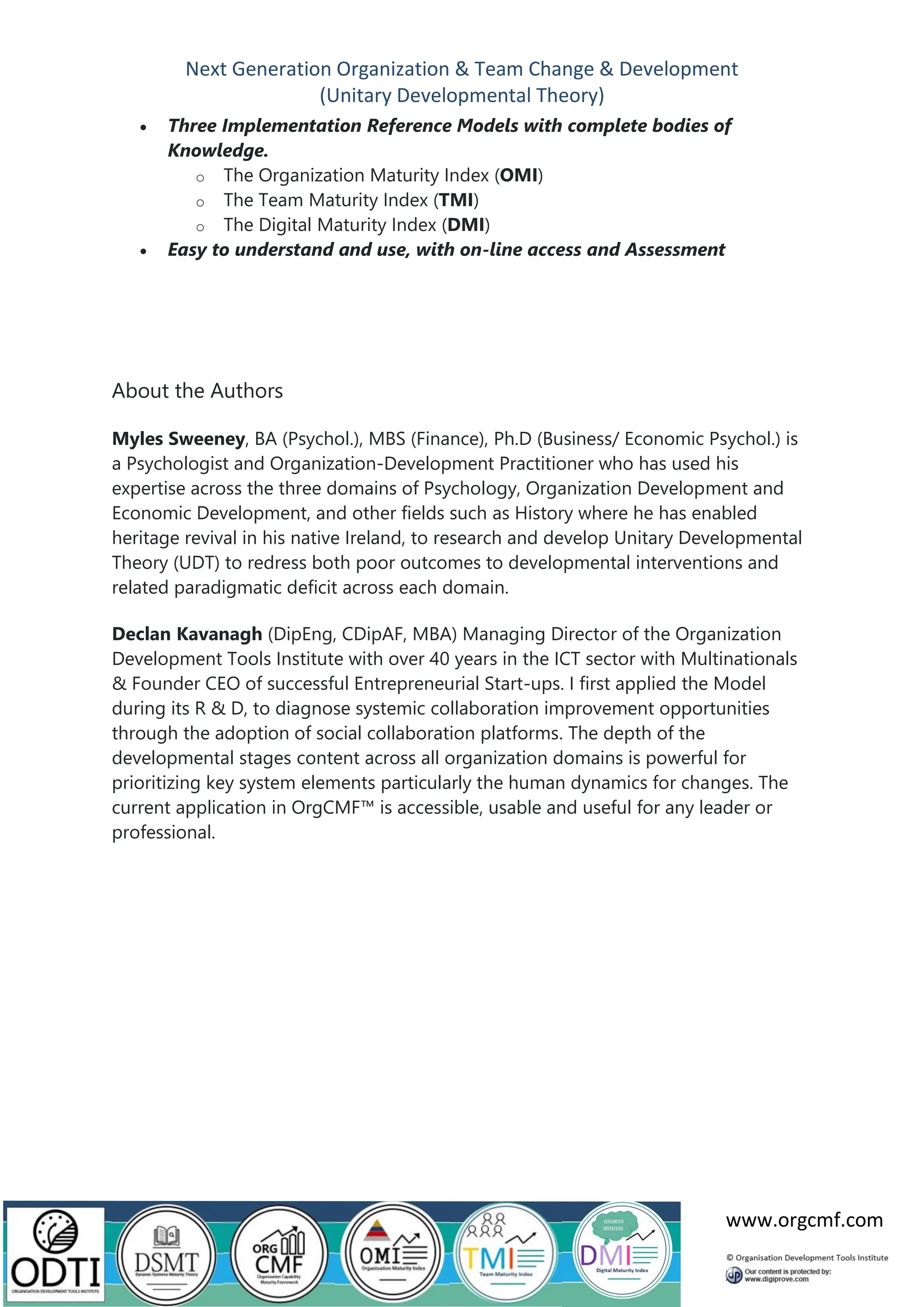Unitary Developmental Theory (UDT) is proposed as a comprehensive framework for understanding and improving organizational, individual, and economic development, addressing high failure rates in current change management practices. It offers a structured model for assessing and enhancing capabilities across various levels, enabling organizations to effectively adapt to challenges and foster collaboration and growth. UDT integrates insights from psychology, management, and economics to create actionable strategies for sustainable transformation and performance improvement.

